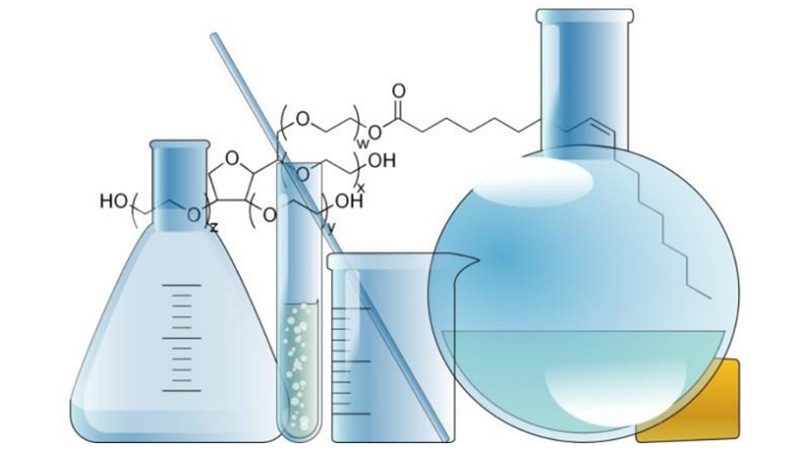MSDS/SDS: The "Safe Navigation Chart" of the Chemical World
Release time:
2025-06-18
Imagine embarking on a journey to explore unknown chemical territories. It's a place full of fascinating reactions, but also hidden risks. At such a time, how wonderful it would be to have a detailed "navigation chart" in hand, guiding you to identify shoals, avoid storms, and safely reach the other shore! In the world of chemicals, this "navigation chart" is what we will delve into today: MSDS/SDS—the Material Safety Data Sheet.
I. MSDS/SDS: Chemical "Identity Card" and "Risk Disclosure Statement" MSDS stands for Material Safety Data Sheet. With the promotion of the Globally Harmonized System of Classification and Labeling of Chemicals (GHS), the term SDS (Safety Data Sheet) is more commonly used, and its content tends to be more international and standardized. It is not a simple product introduction, but a comprehensive, professional technical document, serving as a chemical's "identity card" and "risk disclosure statement."
What is the core mission of this document? Simply put, it is to "transmit safety information and protect life and health." It is compiled by chemical manufacturers or distributors to clearly and accurately convey key information to users, such as the chemical's physical and chemical properties, potential hazards (e.g., flammable, explosive, toxic, corrosive), safe handling guidelines, emergency disposal measures, storage and transportation requirements, and relevant regulations. Whether it's a researcher in a laboratory, an operator in a factory, a driver during transportation, or emergency personnel in the event of an accident, MSDS/SDS is an indispensable safety partner for them.
II. The "Treasure Map" of MSDS/SDS - Revealing Its Main Contents An internationally universal MSDS/SDS typically consists of 16 standard sections, each carrying specific safety information, like markers on a treasure map, guiding us to safely understand and use chemicals. Let's explore these "treasures" together:
- Part 1: Chemical Product and Company Identification - Clarifies "who you are and where you come from," including the chemical name, supplier information, and emergency contact details.
- Part 2: Hazard Identification - The core warning area! It visually displays the main hazards using GHS label elements (pictograms, signal words, hazard statements).
- Part 3: Composition/Information on Ingredients - Reveals "what you are made of," listing hazardous components and their concentration ranges.
- Part 4: First-Aid Measures - "What to do in case of an accident?" Provides first-aid guidance for different routes of exposure (inhalation, skin, eyes, ingestion).
- Part 5: Fire-Fighting Measures - Covers the choice of extinguishing agents for the chemical, special fire hazards, and firefighter protection.
- Part 6: Accidental Release Measures - How to safely control and clean up spills, protecting personnel and the environment.
- Part 7: Handling and Storage - Safe operating procedures and suitable storage conditions, preventing problems before they occur.
- Part 8: Exposure Controls/Personal Protection - Sets occupational exposure limits and recommends appropriate personal protective equipment (PPE), such as gloves, safety goggles, etc.
- Part 9: Physical and Chemical Properties - Describes the substance's "appearance" and "temperament," such as color, odor, pH value, melting/boiling points, flash point, etc.
- Part 10: Stability and Reactivity - Explains its stability, conditions to avoid (e.g., light, high temperature), and incompatible substances.
- Part 11: Toxicological Information - Elucidates potential toxic effects on the human body, such as acute toxicity, carcinogenicity, etc.
- Part 12: Ecological Information - Assesses its potential impact on the environment, such as biodegradability and aquatic toxicity.
- Part 13: Disposal Considerations - Guides on how to safely and environmentally dispose of waste chemicals and their packaging.
- Part 14: Transport Information - Involves the UN dangerous goods number (UN number), proper shipping name, packing group, etc.
- Part 15: Regulatory Information - Lists domestic and international regulations related to the chemical.
- Part 16: Other Information - Includes the MSDS compilation/revision date, references, and other supplementary information.
These 16 sections are like 16 keys, jointly opening the door to safe chemical use.
III. How to "Follow the Map" - Efficiently Reading MSDS/SDS How can one quickly and accurately obtain the necessary information when faced with such a rich MSDS/SDS? This requires some strategies and techniques.
Reading Principle: Clear Purpose, Targeted Approach. Before opening an MSDS/SDS, ask yourself: "What do I need to know?" Is it for daily operational safety? Or to deal with an emergency spill? Or to inquire about transportation regulations? Different purposes naturally lead to different focuses.
Initial Scan and Key Focus: First, quickly browse Part 1 (Chemical Product and Company Identification) to confirm you have the correct chemical's MSDS. Immediately thereafter, be sure to carefully read Part 2 (Hazard Identification); this is the "soul" of the MSDS, where pictograms and signal words will give you the most direct hazard warnings.
Based on Needs, Delve into Specific Sections:
- Daily Operations and Protection: Focus on reading Part 7 (Handling and Storage) and Part 8 (Exposure Controls/Personal Protection) to understand how to safely operate and store, and what protective equipment is needed.
- Emergency Response: Remember the content of Part 4 (First-Aid Measures), Part 5 (Fire-Fighting Measures), and Part 6 (Accidental Release Measures); these are "lifesavers" in critical moments.
- Understanding Substance Properties: Refer to Part 9 (Physical and Chemical Properties) and Part 11 (Toxicological Information) to gain a deeper understanding of its "nature."
Understanding Professional Terms and Symbols: MSDS/SDS often contains professional terms (such as CAS number, LD50) and GHS symbols. For unfamiliar terms, one should actively search and learn. The CAS number is the unique identity identifier of a chemical substance and is very important. GHS pictograms can quickly convey hazard information.
Utilizing Tools to Organize Information (Ideas for Using Tables and Mind Maps): Although MSDS/SDS itself is a text document, we can use the concept of tables or mind maps to aid understanding and memory:
- Tabular Organization (Idea): For chemicals frequently encountered, one can design a concise "Chemical Safety Information Quick Reference Chart." The table can list the chemical name, main hazards (excerpted from Part 2), core protective measures (excerpted from Part 8), key first-aid points (excerpted from Part 4), and emergency contacts. This way, key information is clear at a glance, facilitating quick lookup.
- Mind Map Understanding (Idea): With the chemical name as the center, take the 16 sections of the MSDS or the parts you focus on as main branches, then refine the key information points under each branch. For example, under the "Hazard Identification" branch, specific pictogram meanings and signal words can be listed; under the "Personal Protection" branch, specific requirements for respiratory protection, hand protection, and eye protection can be listed. This method helps build a knowledge network and understand the connections between different information points.
Paying Attention to Timeliness: Regulations and knowledge are constantly being updated, so MSDS/SDS will also be revised accordingly. It is essential to ensure that you are using the latest version of the MSDS/SDS; outdated information may lead to incorrect judgments and operations.
In conclusion, MSDS/SDS is not just a document; it is an important cornerstone in the chemical safety management system. Learning to correctly read and understand it is like mastering the compass and chart for safe navigation in the chemical world. Every careful reading is a responsibility towards one's own safety and health, and a contribution to environmental protection. Let us work together to ensure that this "safe navigation chart" truly plays its due value!
MSDS,SDS
Latest News
Get a Free Consultancy
NANTONG EASTO MATERIALS TECHNOLOGY CO.,LTD.

No.118,Zhujiang Rd.,Juegang St.,Rudong County,
Nantong City,Jiangsu Province,226400,China




 2025-06-25
2025-06-25







